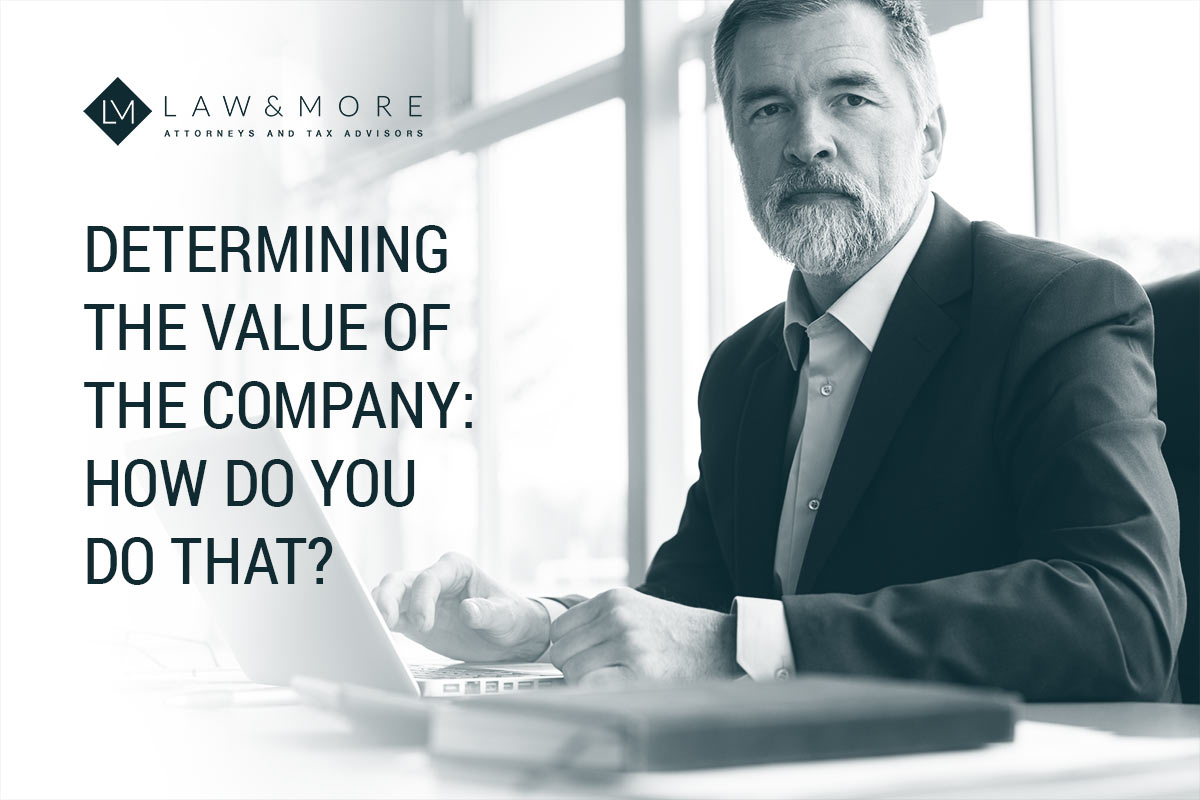What is the Value of the Company?
What is your business worth? If you want to acquire, sell, or simply know how your company is doing, it is useful to know the answer to this question. After all, although the value of a company is not the same as the final price that is actually paid, it is the starting point in the negotiations about that price. But how do you arrive at the answer to this question? There are a number of different methods. The main methods are discussed below.

Determination of the net asset value
The net asset value is the value of the company’s equity and can be calculated by subtracting the value of all assets, such as buildings, machinery, inventories and cash, minus all liabilities, or debts. Based on this calculation, it can be determined what a company is actually worth right now. Nevertheless, this method of valuation does not always provide a complete picture. After all, the ever-changing balance sheet is the basis of this intrinsic valuation.
In addition, the company’s balance sheet does not always include all assets, such as knowledge, contracts and quality of personnel, nor does it always include all financial liabilities such as rental and lease contracts. This method is therefore only a snapshot that says nothing more about the progress in the past or the possible future perspective of the company.
Determination of the profitability value
The profitability value is another way by which the value of the company can be determined. In contrast to the previous method, this calculation method does take into account (the profit level in) the future. In order to determine the value of your company using this method, you must first determine the profit level and then the profitability requirement. You determine the profit level on the basis of the net profit of the company, taking into account the profit development in the past and the expectations for the future.
Then you divide the profit by the required return on equity. This return requirement is often based on the interest on a long-term risk-free investment plus a surcharge for sector and business risk. In practice, this method is most commonly used. Even so, this method does not take sufficient account of the company’s financing structure and the presence of the other assets. Moreover, with this method, the investment risk cannot be separated from the financing risk.
Discounted cash flow method
The best picture of the value of the company is obtained by calculating using the following method, also called the DFC method. After all, the DFC method is based on cash flows and looks at their development in the future. The underlying idea is that the company will only be able to meet its obligations if sufficient funds come in and that the results from the past are no guarantee for the future. That is why the banks also attach great importance to the valuation of a company according to this DFC method.
However, the valuation according to this method is complex. In order to form a good picture of the profit you could make with the company in the future, it is important to map out all future cash flows. Subsequently, the incoming cash flows must be settled with the outgoing cash flows. Finally, with the aid of Weight Average Cost of Capital (WACC), the result is discounted and the value of the company follows.
Above three ways have been discussed in order to determine the value of the company. Returning to the introductory question, the answer to it is thus not unambiguous. Moreover, each method leads to a different end result. Where one method only looks at a snapshot and determines that a company is worth a million, the other method looks mainly to the future and expects the same company to value one and a half million. It seems logical to choose the method with the highest valuation.
However, this is not always the best method for your company and the valuation is custom-made in most cases. That is why it is wise to engage a professional and to obtain advice on your legal position before entering a purchase or sale process. Law & More’s lawyers are experts in the field of corporate law and are happy to provide you with advice but also with all kinds of other assistance during your process, such as drafting and assessing contracts, due diligence and participating in the negotiations.
